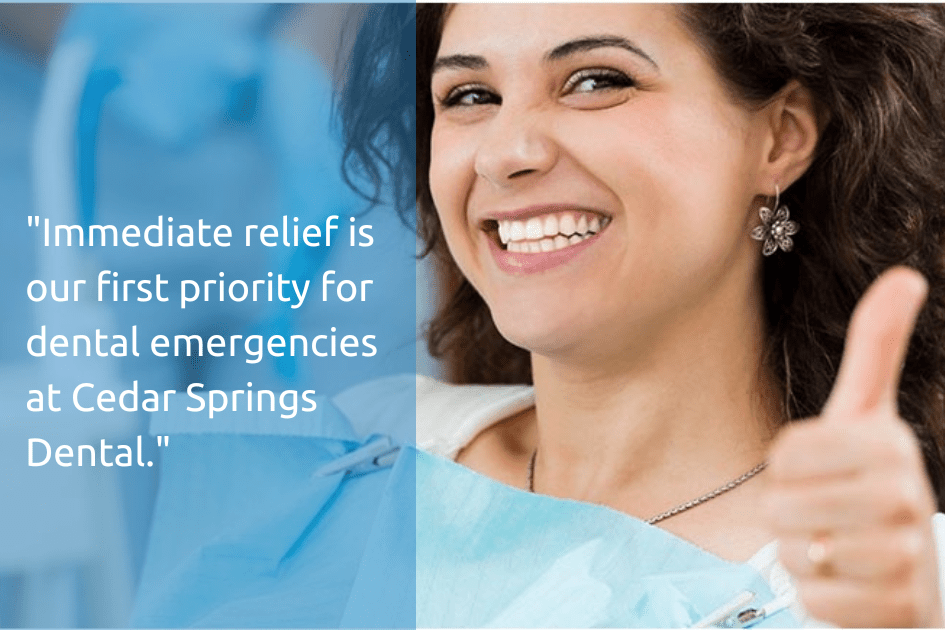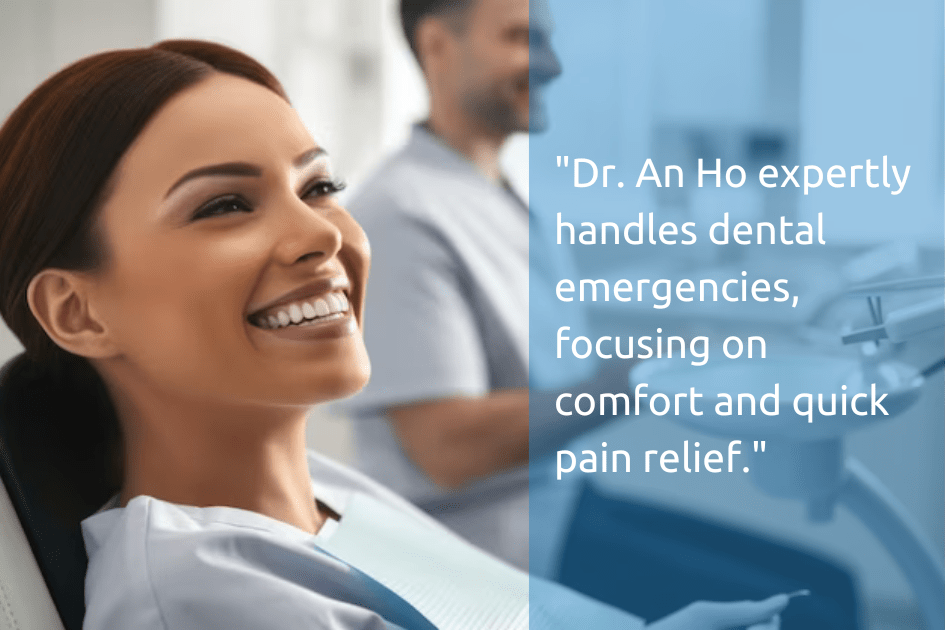Emergency Care
Got a dental disaster in the Helotes area? The team at Cedar Springs Dental is here to help! Led by Dr. An Ho, we make it our mission to provide caring emergency dental treatment when you need it most.
Dr. An Ho is a pro at handling all kinds of dental emergencies – from knocked-out teeth, toothaches, and bleeding gums to painful abscesses. She knows dental issues can freak people out, so her top focus is always on making patients comfortable and easing their pain quickly.

Benefits of Emergency Dental Care
Immediate Relief
If you come to see us for an emergency, our first priority will be to get your pain and swelling under control right away. We’ll give you meds, temporary fillings, whatever it takes to help you feel better ASAP. Don’t put up with the suffering – we can help!
Prevention
It’s important to get emergency dental care before little problems turn into huge problems. For example, a small cracked tooth can sometimes be repaired, but if you wait too long it may need a root canal or extraction. Nip it in the bud!
Comprehensive Care
At our office, we offer all kinds of dental services – cosmetic dentistry, implants, the works! So after we resolve your emergency, we can take care of any other dental needs you have to get your smile looking fabulous.
Safety
Trying to DIY dental emergencies can make things worse! Our clinic follows strict safety rules and keeps everything squeaky clean. You’re in good hands with us.
Why Choose Cedar Springs Dental?
Dr. An Ho really knows her stuff when it comes to dental emergencies. She’ll take care of you gently, and calmly and explain everything in a way you can understand.
Our office uses the latest tools and tech to find the source of your pain and fix it properly. We’ll always give you the real deal on what treatments will cost, and help you with insurance claims.
Basically, we want to make resolving your dental emergency as smooth and comfortable as possible. Give us a call, and we’ll have you smiling again in no time!

Cedar Springs Dental Services
Some of the awesome services we provide include:
- General Dentistry – exams, cleanings, fillings, the usual stuff
- Cosmetic Dentistry – teeth whitening, veneers, smile makeovers
- Dental Implants – replace missing teeth
- Root Canals – root canal therapy
- Family Dentistry – care for the whole family!
Book an Emergency Appointment
If you’re dealing with intense dental pain, chipped teeth, or any other emergency, don’t wait – contact us now! We’ll get you taken care of promptly.
Your oral health and comfort are our top priority, so we’ll make sure to schedule emergency treatment as soon as possible. Let our experienced emergency dentist Dr. An Ho alleviate your discomfort and get you smiling confidently again!
 Schedule Appointment
Schedule Appointment